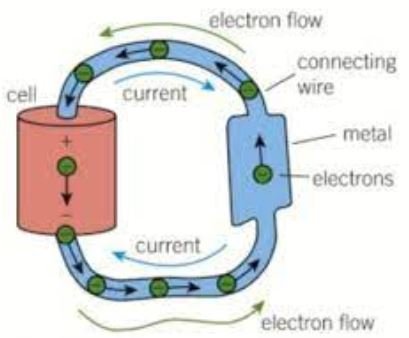What is electricity
A lot of students struggle with this topic and just like with many topics, the problem lies within the foundational understanding. A student may be struggling with how voltage and current behaves in series and parallel circuits, but has not noticed that they do not understand what voltage and current is. Once you understand these concepts properly, less energy is required to remember a series of isolated facts and equations as everything is integrated and so can be derived from first principles. Taking this approach also has two other important benefits. You get the marks on the harder questions in which your understanding is really being put to the test and you actually feel like you are learning something and so are more engaged. This will form the first part of a little series of posts on the topic of electricity. I will be focusing around 4 words within this post: Current, voltage and charge.
What is charge?
Charge can be negative or positive. It is measured in coulombs, which have the symbol C and the symbol for charge is Q. Some particles have charge, some do not. For example, protons have a charge of 1.6x10-19 coulombs and electrons have an equal and opposite charge (ie. -1.6x10-19 coulombs). Opposite charged objects attract one another, (like opposite magnetic poles) and like charged objects repel. Now, hopefully you have realised that I haven’t really answered the question satisfactorily, right? That doesn’t exactly seem to explain what charge actually is. Well, firstly don’t worry… I don’t think many scientists really know what it is, and you certainly do not need to know at GCSE or A-level. Secondly, when you think about it, the same can be said about many other things which we are more familiar with, but we are not in the habit of questioning. Why do things fall? Gravity. Why does gravity make things fall? Er… because they have mass, and a gravitational field causes masses to attract one another? Ok… Now that opens up a few more obvious questions: What is mass? Why do masses fall in a gravitational field? What causes things to have mass? Oh no! Now nothing makes sense! This is why to wary of anybody who claims to fully understand anything.
And current?
So now I have rest your mind at ease that nobody really knows what charge, I will talk about how this thing that we don’t really understand can flow around a circuit and be carried by certain charge carriers. A charge carrier is anything that has a charge and moves from one place to another. Pretty much all of the time, in a circuit, this is an electron. If electrons are moving in roughly the same direction, current is flowing. Current (annoyingly) has the symbol I and is measured in amperes (amps for short) which, have the symbol A. Electrons are free to move within a lump of metal which leads to certain characteristics specific to metals such as being good conductors of heat and electricity; being shiny; being able to bend without breaking and some other properties. Current is a measure of how much charge is flowing and how quickly. This can be worded in the following textbook style sentence:
Current is the rate of flow of charge.
So it is measured by how much charge is flowing past a point in a certain amount of time. This means, in theory, you could start a clock and count how much charge passes a point in whatever amount of time, in seconds, you choose and then divide the total charge by the time on the clock and you would have a measure of the current in amps.
Essentially, this is what an ammeter does. This is also why an ammeter is connected in series with whatever it is measuring the current of. The resistance of an ammeter is very low as it is designed to not affect the flow of electricity within the circuit and so things should be roughly the same whether the ammeter is wired in or not. Any good measuring device is attempting to peek inside somewhere without affecting what is going on.
So, current would increase if the electrons are flowing more quickly or if there are more electrons flowing.
What about voltage?
Voltage can be thought of as the amount of energy given to the charge. Of course, if charge has more energy you would expect it to flow more quickly right? That is exactly what happens. (More on this in the next post) So, voltage is the amount of energy per unit charge. Or we can think about it as the difference in energy per charge between two points. What type of energy are we talking about here? Well it is electrical potential energy as it happens. If two opposite charges are separated from each other, they have the potential to move closer together and as they do their electrical potential energy will be transferred into kinetic energy. All of this is why another word for voltage is potential difference and can be calculated in the following way:
I did want to talk about resistance in this post, but I’m out of words! I will just leave the image below which sort of sums it up for now and I shall go into more detail in my next post.
Thanks for reading to the end and I hope you found it helpful!








